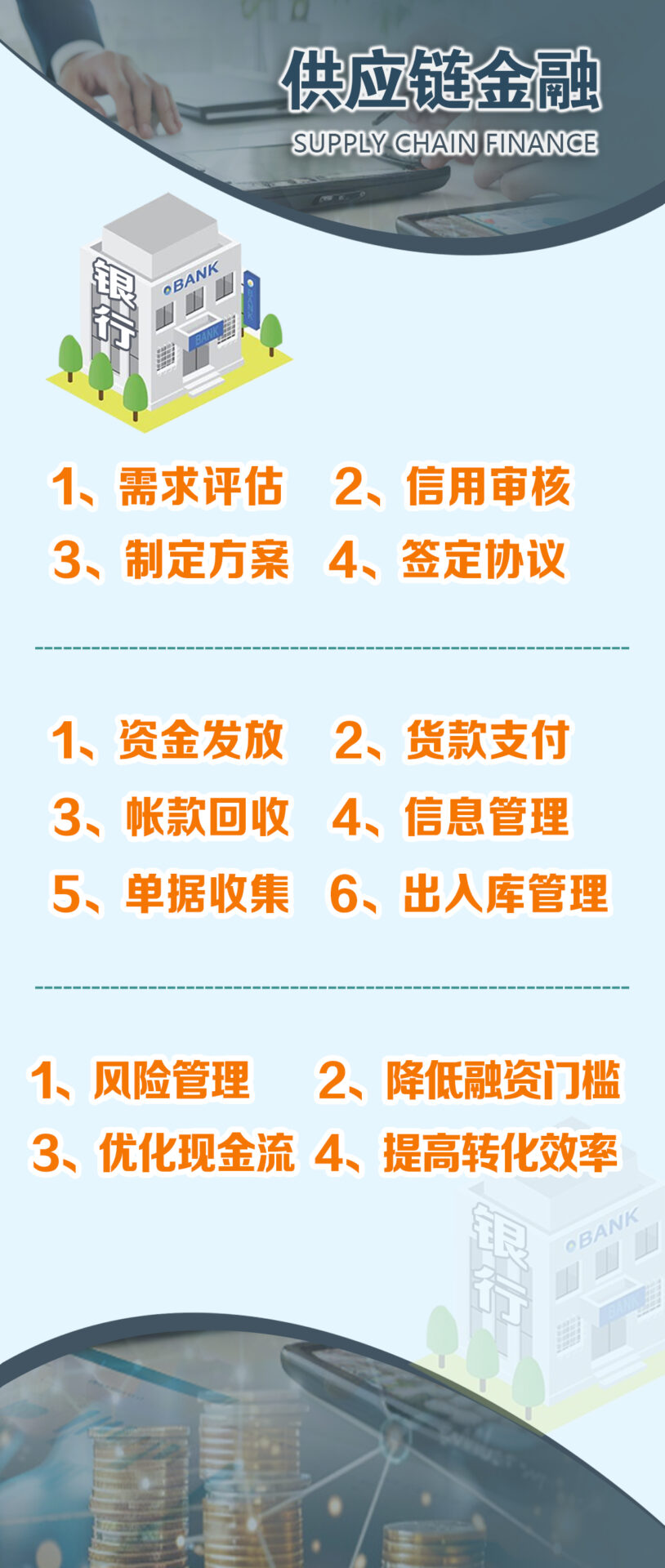Supply Chain Finance

A business model that relies on core enterprises and their upstream and downstream partners in the supply chain, utilizing financial tools and technological means to provide comprehensive financial services such as financing, settlement, and risk management for small and medium-sized enterprises (SMEs) within the supply chain.
By optimizing the flow of funds, information, and logistics, it addresses the challenges of difficult and expensive financing for SMEs in the supply chain, enhancing overall efficiency.
Main Models of Supply Chain Finance
1 Accounts Receivable Financing:
◦Based on the credit of the core enterprise, SMEs transfer their accounts receivable from the core enterprise to financial institutions to obtain short-term funds.
◦Applicable Scenario: Suppliers facing cash flow difficulties due to long payment terms from buyers.
2 Inventory Financing:
◦Using inventory goods (e.g., raw materials, finished products) as collateral to apply for loans from financial institutions.
◦Applicable Scenario: Enterprises needing to unlock liquidity by leveraging inventory.
3 Prepayment Financing:
◦The core enterprise provides guarantees for suppliers, enabling financial institutions to issue loans to suppliers for procurement and production.
◦Applicable Scenario: Suppliers needing to pre-finance production for orders.
4 Order Financing:
◦Based on genuine trade orders, financial institutions provide loans to SMEs to fulfill orders.
◦Applicable Scenario: Enterprises receiving large orders but lacking production funds.
5 Factoring Financing:
◦Suppliers sell their accounts receivable to a factor, receiving funds in advance, with the factor responsible for subsequent collection.
◦Applicable Scenario: Enterprises needing to quickly recover funds.
6 Warehouse Receipt Financing:
◦Using standard warehouse receipts (from bonded or general warehouses) as collateral to apply for loans from banks.
◦Applicable Scenario: Enterprises holding large quantities of bonded goods or bulk commodities.
Applicable Scenarios
1 SME Financing: Suppliers and distributors needing short-term funds due to payment terms or orders.
2 Core Enterprise Optimization: Large enterprises support upstream and downstream partners through supply chain finance, enhancing overall supply chain competitiveness.
3 Cross-Border Trade: Combined with bonded operations, providing cross-border financing for importers and exporters.
4 Industry Supply Chains: High capital-intensive industries such as manufacturing, retail, agriculture, and bulk commodities.
Supply chain finance integrates the credit of core enterprises and supply chain resources to provide efficient, low-cost financing solutions for SMEs while enhancing the overall competitiveness of the supply chain.
Successful implementation relies on genuine trade, digital technologies, and standardized risk control. If you need detailed solutions for specific industries (e.g., cross-border e-commerce, manufacturing) or models, please let me know!
If you have further questions or need specific case studies, please inform me!



